Its richness and diversity of its cultural heritage attracts thousands of tourists all year round.
It is worth including this city on your travel bucket list, especially when you think about the number of interesting places and monuments it has to offer. Below you will find the list of the best attractions in Lisbon that will help you organize your dream trip. Let’s go on a journey to Lisbon!
Lisbon Oceanarium

If you are afraid that your children will be bored while sightseeing the city, the Lisbon Oceanarium is the best evidence that children can also be delighted with their stay in the Portuguese capital. This facility, located in the Park of Nations, will allow you to observe the underwater life of fish as well as amphibians, mammals and plants up close. The main aquarium, which holds up to 5 million liters of salt water, can be seen from the level of two floors, which guarantees that you will not miss any of its inhabitants. This tank is surrounded by the four others, each of which imitates a different ocean and its ecosystem. You will definitely not leave this magical place without dozens of photos of menacing sharks, cute sea otters, funny penguins and multi-colored corals.
Estadio da Luz
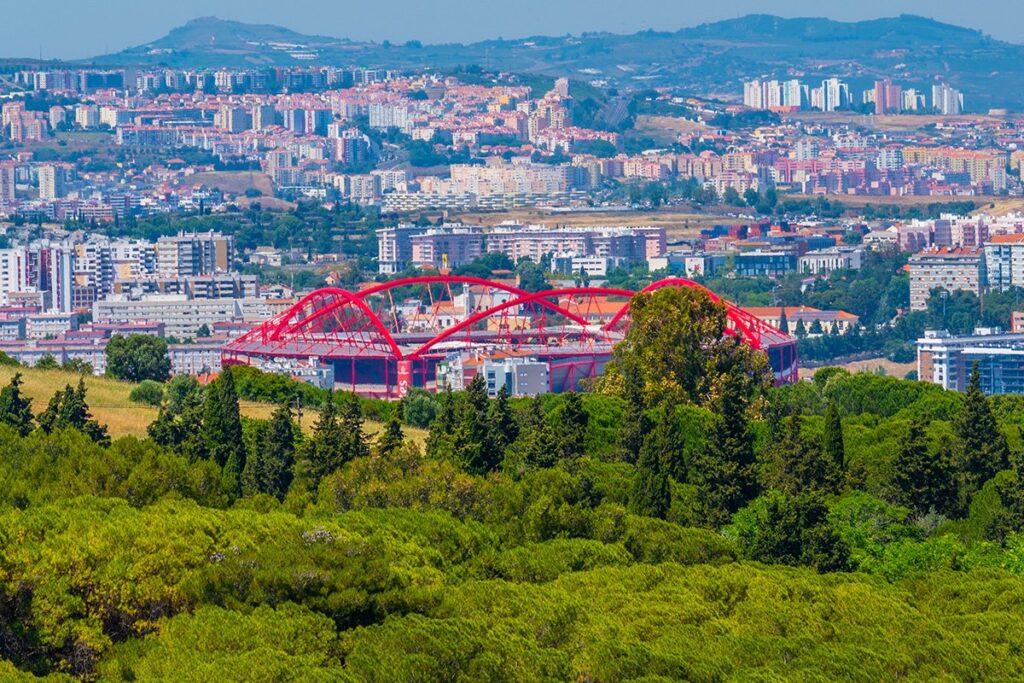
Football fans definitely cannot miss a visit to Estádio da Luz, the stadium of Sport Lisboa e Benfica football club. This sports facility, called the Cathedral by the most die-hard fans, was built in 2003 and its stands can accommodate as many as 65,000 fans. The tour will allow guests to enjoy attractions such as a walk on the pitch, access to the conference room and entrance to the Benfica museum.
It will reveal to you, among other things, a display case with cups and allow you to use the match day simulator. The stadium also houses a swimming pool complex, a restaurant overlooking the pitch and the official store of the football club. The richness of its assortment will not disappoint even the greatest enthusiasts of the club.
St. George’s Castle
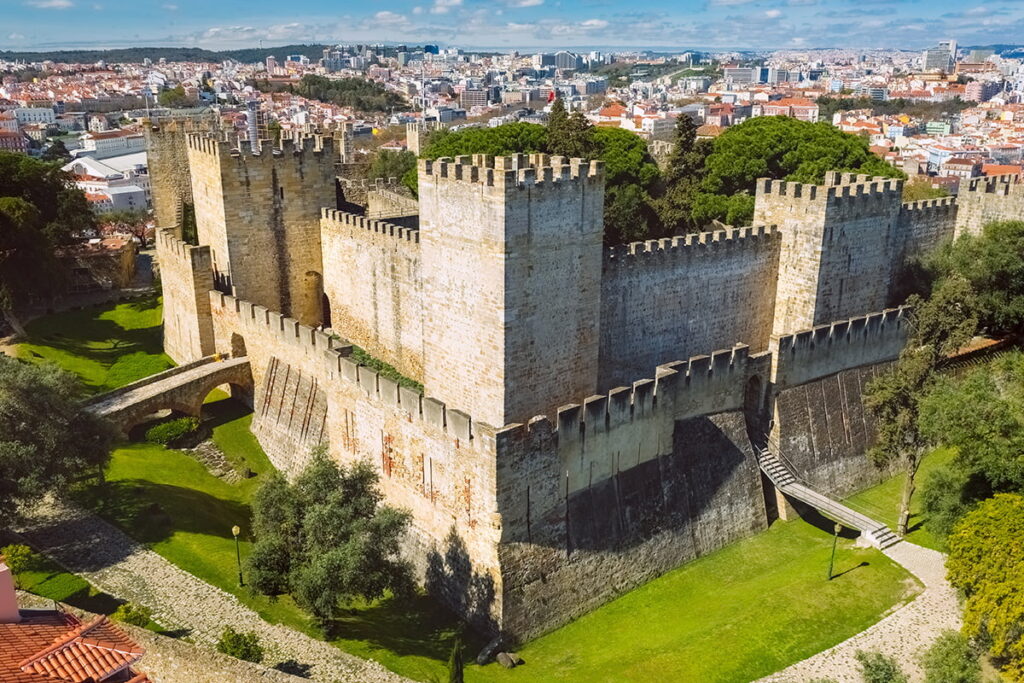
Thanks to its unique location, St. George’s Castle (port. Castelo de São Jorge) is one of the most important and attractive viewpoints in the city. However, you definitely should consider it more than just a viewpoint, because the castle itself tells you the story of Lisbon too. Originally it was an Arab fortress, but as soon as in the 12th century the building was captured by the first king of Portugal, Alfonso Henriquez. This eleventh-century castle has preserved its eleven towers and ornaments adorning the fortifications to this day, testifying to the presence of Arabs in these areas. Apart from visiting the castle itself, do not forget to stop at the archaeological site and take a moment for a leisurely stroll through the castle gardens among ducks and peacocks.
Hieronymites Monastery
Inscribed on the UNESCO list in 1983, the Hieronymites Monastery (port. Mosteiro dos Jerónimos) was built to commemorate the return of Vasco da Gama from India. This is confirmed by, among other things, decorative elements referring to sea shipping. Interestingly, the monastery was built on the ruins of a chapel where Vasco da Gama and his crew prayed before going on a cruise.
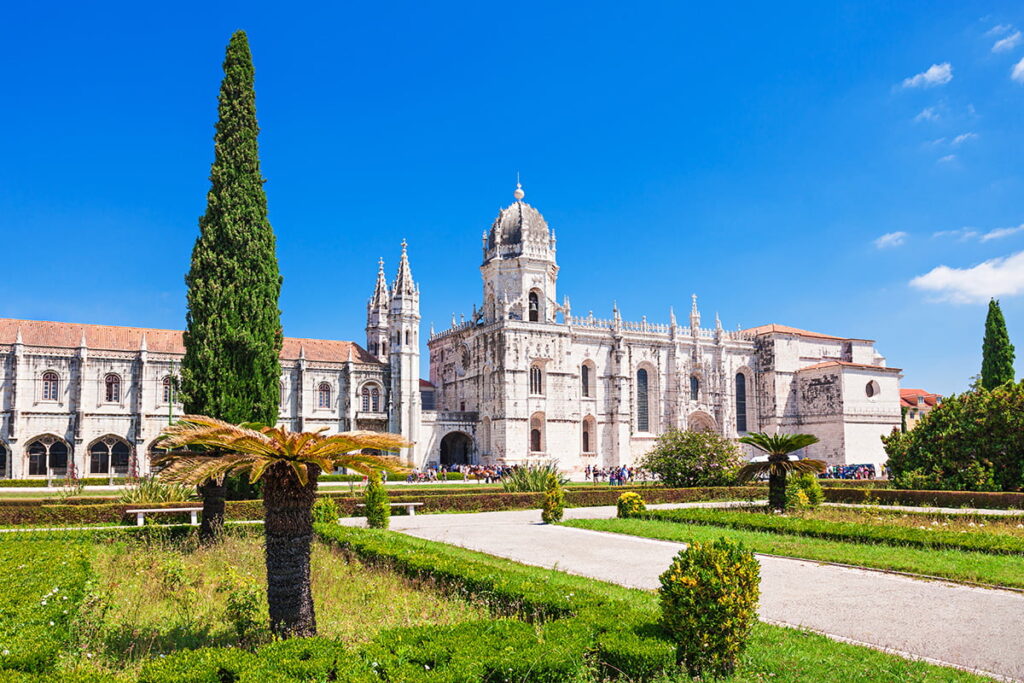
When visiting the monastery itself, you will also be delighted by the Manueline church located right next to the convention. It is also worth visiting the National Museum of Archeology located in one of the wings of the monastery. Fans of the most ancient history will not be disappointed as it is the most important archaeological collection in all of Portugal.
National Pantheon
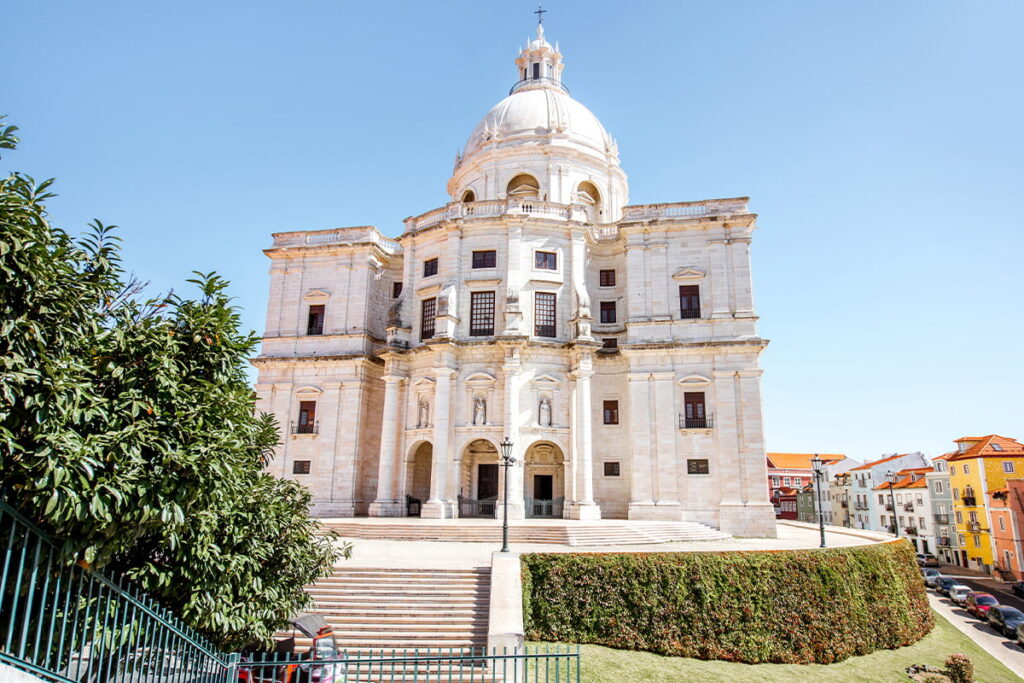
Visible from afar thanks to its characteristic dome, the National Pantheon in Lisbon was constructed as the Church of Saint Engracia. However, since the beginning of the 20th century, this place has been a commemoration of the most outstanding and distinguished Portuguese people. The building pays tribute to, among others, Amalia Rodrigues, an outstanding fado singer; the world-famous explorer, Vasco da Gama, or Luis de Camôes, the most outstanding Portuguese Renaissance poet. Apart from visiting the interior of the Pantheon, you definitely should climb to its top, where you can admire picturesque panorama of the Alfama district from the huge terrace.
Royal Treasury Museum
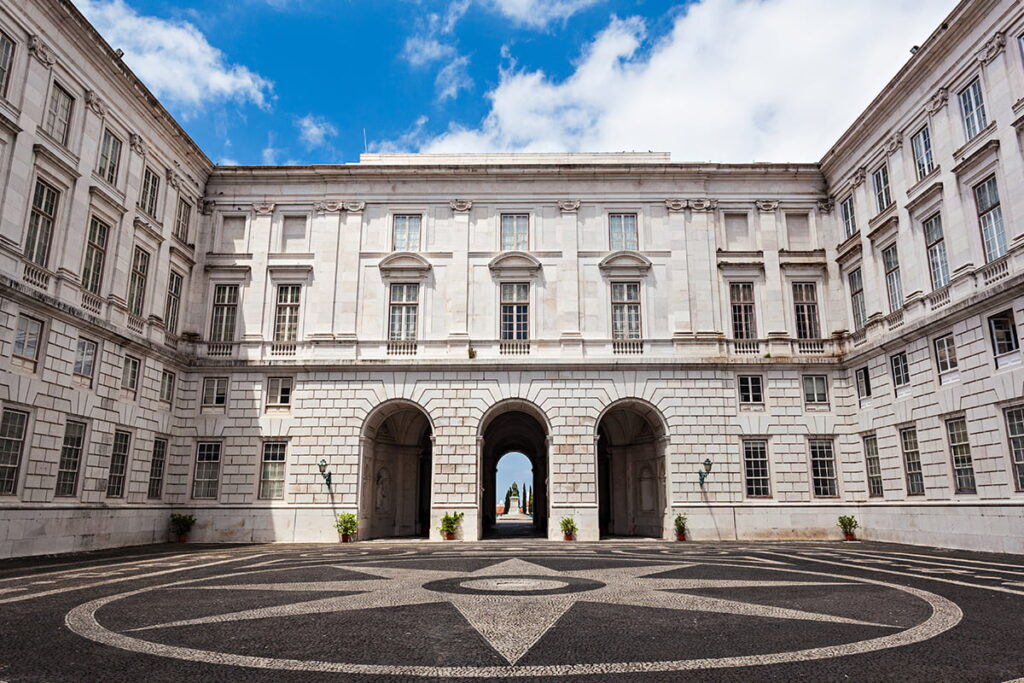
Royal jewels, decorations, diamonds, gold and cut diamonds … you will see all this up close at the exhibition at the Royal Treasury Museum. This unique collection is divided into as many as 11 sections. Of course, the idea behind the exhibition was to present over a thousand valuables, including valuable colonial gains and authentic royal crowns, but the museum’s intention is not to emphasize their artistic or symbolic value.
Instead, it presents their practical use, the ceremonies that were associated with them, and even the way they were used for propaganda purposes. Thanks to the use of new technologies, the entire facility is extremely interactive and brings the present and the past closer together in a way that is very attractive to visitors.
The Cathedral of Saint Mary Major (the Sé)
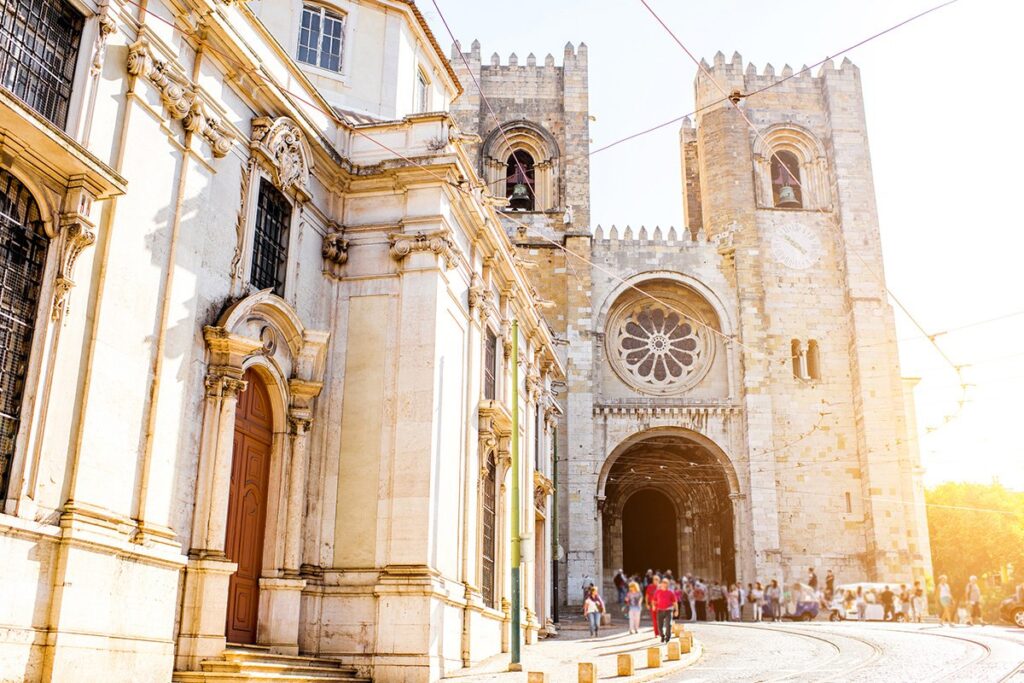
When describing the most interesting attractions in Lisbon, one cannot forget about the majestic Sé, the most important and oldest church in the capital. Due to numerous reconstructions, the temple combines various architectural styles, but the elements of the Romanesque style definitely dominate there. This is evidenced, among others, by two massive towers and a rosette in the middle. Bearing in mind how the Church miraculously survived the 1531 earthquake, it is considered by many to be a symbol of the resistance and endurance of the Portuguese. For the inhabitants of Lisbon, it is also a special place, as it houses the relics of St. Vincent, the patron saint of the archdiocese.
National Museum of the Azulejo
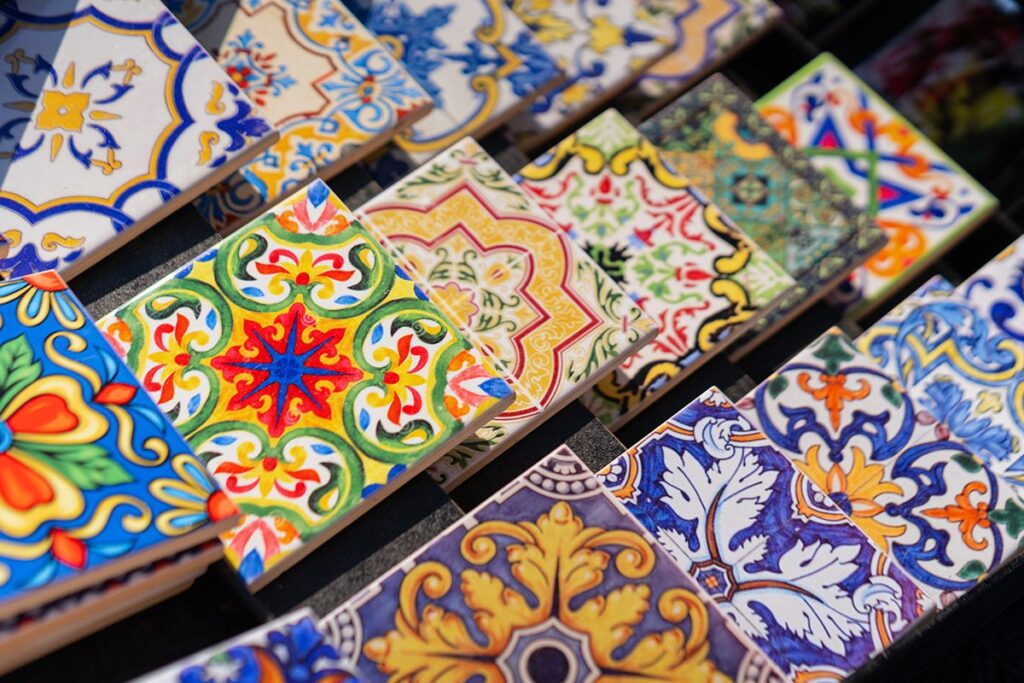
There is no doubt that one of the first associations that Portugal evokes are colorful, often blue, decorative tiles, i.e. azulejos. The Museum of Azulejo is a place that allows visitors to trace the history of these famous, traditional, small works of art stretching from the 15th century until the present day. The museum is located in the old 16th-century convent of Our Lady, so the building itself is very attractive to tourists. The main exhibition tells the entire story of the capital using this traditional decorative technique. Interestingly, we can find there not only Portuguese azulejos, but also Spanish, English and Dutch.
Cable car in Lisbon
If you are interested in attractions in Lisbon that allow you to see the city from a different perspective, make sure to take the cable car to Parque das Nações, which will allow you to enjoy views that you will not see anywhere else. The cable car connecting Vasco da Gama Tower and the Oceanarium has existed there since 1998 and was built for Universal Expo 98. During the 8 to 12-minute ride over the Tajo River, you will have the opportunity to see the amazing panorama of the Park of Nations, the Oriente district and even the impressive Vasco da Gama bridge. This is an amazing opportunity to look at the entire Expo 98 area from an unusual perspective.
Lisbon Zoo
The capital’s zoo encourages you to visit the site with the slogan: “See the whole world in one day”. Depending on which part of the Lisbon zoo you are in, you will feel like you are on an African safari watching the life of giraffes and tigers; on a sea expedition, looking for happy dolphins in the ocean or on an ornithological observation, watching the majestic flights of colorful South American birds. The youngest can also learn all about the life cycle of farm animals. In this garden, neither adults nor kids will feel bored, but remember to spend a lot of time in it, because the zoo houses over 2,000 animals and nearly 300 species, and its area is 200,000 m2.

Belém Tower
Torre de Belem, situated right at the mouth of the Tagus River, was built as a defensive tower to ensure the security of sea access to the city. Over time, however, it turned into a customs center and a lighthouse. Narrow stairs leading through five floors lead to the observation deck at the very top of the tower. Although the interior of the tower is quite empty, it is definitely compensated by the splendor of the decorations on the facade. Stone ornaments commemorate sea conquests, and among them is the first sculptural representation of a rhino in Europe.
Ajuda National Palace
Although it was created to be a royal seat, since 1910 the Palácio Nacional de Ajuda has been a museum that introduces its visitors to the secrets of royal life in the 19th century. The neoclassical building delights not only with its rich decorations and extremely detailed statues, but also allows you to take a close look at once used furniture, everyday objects or chandeliers. There are also examples of works of art, numerous paintings, sculptures and ceramics. Currently, the most important ceremonies with the participation of the President of Portugal take place in the Palace. It is also the seat of the Ajuda National Library, the Ministry of Culture and the previously mentioned Royal Treasury Museum.
Immersivus Gallery Lisbon
The Immersivus Gallery in Lisbon was the second gallery, following the one in Porto, to be established in Portugal to enrich the cultural offer of the country. Thanks to the combination of art and technology, this unique center allows its visitors to experience craftsmanship in a way that is hard to experience anywhere else. The gallery presents works related to a given topic of the exhibition in a digital way, which makes you feel as if you were admiring the paintings from inside of them. While moving, you have the opportunity to get inspired by every perspective possible, rediscovering even the most familiar works.
Calouste Gulbenkian Foundation
The foundation is obviously named after its founder, Calouste Sarkis Gulbenkian, a German philanthropist who lived in Lisbon in 1942-1955. Its main goal is to improve people’s quality of life through art, music, science and education. The Calouste Gulbenkian Foundation is home to the founder’s private art collection and the Center for Contemporary Art, whose exhibits can also be admired there. There is also a choir, an orchestra, an archive, an art library and a research institute. Part of the activities are organized in a charming garden, which allows you to take a break from the hustle and bustle of the big city.
Arco de Rua Augusta
Although it has not retained its original form, this triumphal arc still lives up to its original idea of commemorating the restoration and reconstruction of Lisbon after the catastrophic earthquake of 1755. This monument is crowned by a huge statue of a woman who is an allegory of glory, and is decorated with sculptures of important Portuguese historical figures. In 2013, the highest part of the arch was open to the public as a vantage point with a panoramic view of the river, Lisbon Cathedral and Rua Augusta, a street full of charming shops.
Historic trams in Lisbon
Surely each of you knows the images of Lisbon’s hilly streets and the yellow tram in the foreground. Interestingly, these trams are not a typical tourist means of transport, but are a part of regular public transport network in Lisbon. The most famous and popular line is E28, which will take you with the famous yellow car through all the most touristic and historical points of the city, including the Cathedral or the St George’s Castle. It is not only the sight of the monuments that will amaze you during this trip. Nothing can match a ride through the narrow, charming streets of the capital.
Codfish History Interpretation Center
Not only Lisbon, but all of Portugal is known widely for its countless codfish recipes. It is a very important part of the food culture of this country, and the Codfish History Interpretation Center helps you to understand the phenomenon of this particular fish. The museum offers you an interactive presentation which explains the names of the most famous bacalhao dishes, refers to the unusual relationship of the Portuguese with the sea and shows the important place of codfish in the history of the country.
Other attractions in Lisbon
Of course, these are not all the attractions Lisbon has to offer. If you expect even more from the Portuguese capital, consider the Pilar 7 Bridge Experience, which will allow you to discover the secrets of the 25th April Bridge. If horse riding is close to your heart, visit the Portuguese School of Equestrian Art. It is also worth visiting the National Museum of Carriages and the Carmo Monastery, known as the roofless church. Contemporary art enthusiasts will love the Berardo Collection Museum, while music enthusiasts will enjoy a visit at the Fado Museum, Lisbon’s most famous music genre.